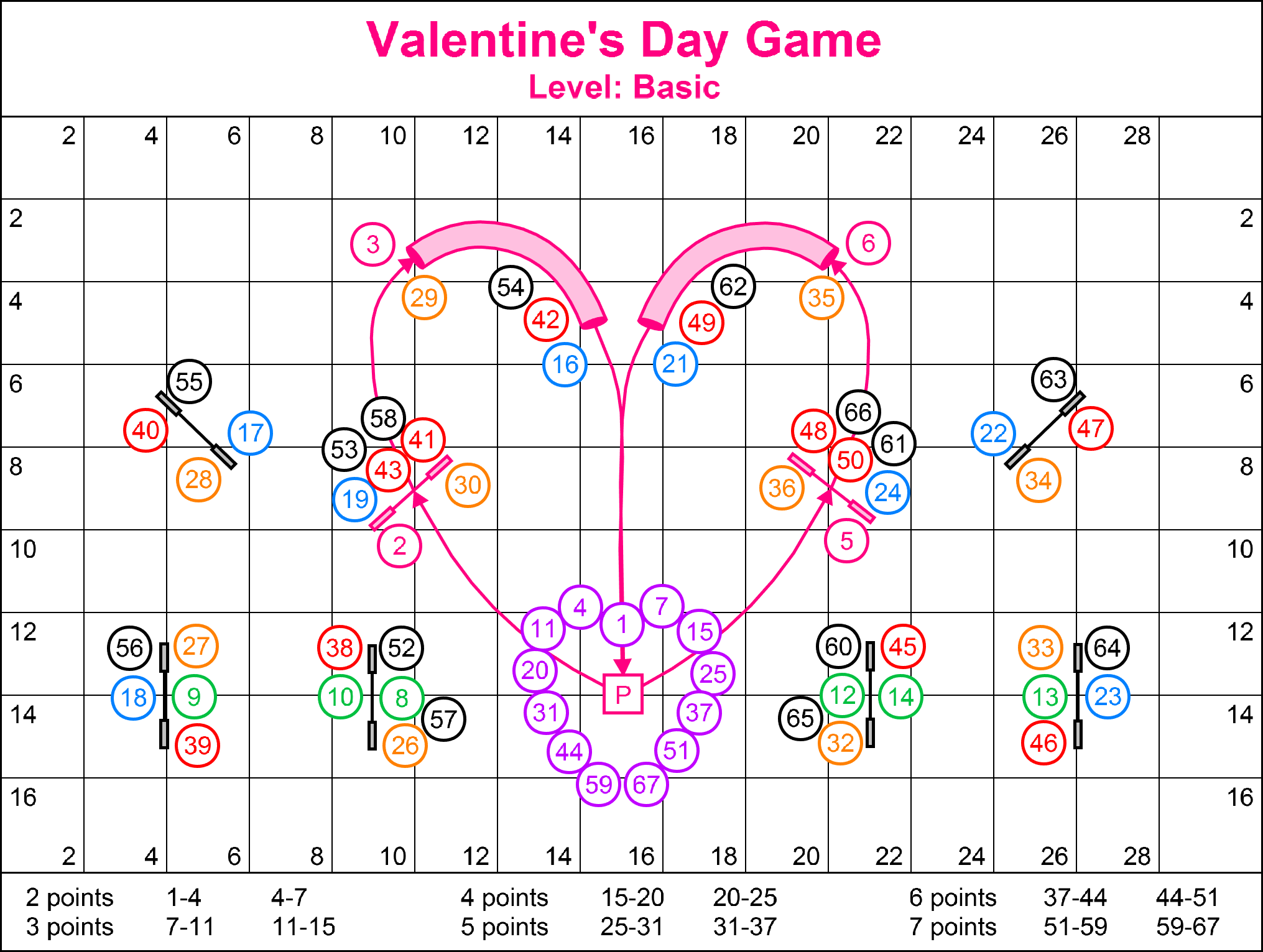In the super fun Valentine’s Day Game designed by leading OneMind Dogs Coach Mikko Aaltonen you and your dog will be a team playing against one or more of your friends and their dogs.

During each round one team will be “the Teacher” and another team will be “the Student”, and then you switch roles so that each team gets to be both a Teacher and a Student every round.
The Teacher will run a sequence on the course and then the Student tries to perform the mirror image of the same sequence, along the same path, using the same handling techniques as the Teacher did.
The Student has the chance to gain points each round based on how well they do. The team with the most points after six rounds wins.
What do you need to be able to play?
- One or more friends with a dog to play with you, the dogs should have similar obstacle skill levels
- 8 jumps, 2 tunnels and a waiting spot on the course (ig. a table, a couch, a marked spot on the ground)
- A training space of 100 ft x 60 ft / 30 m x 18 m
- A scoreboard or something similar where you can write down the points
How to play?
Choose or throw some dice to decide which team will be the Teacher first. Each team will be both a Teacher and a Student every round so if you have more than two teams playing the game, change the combinations on each round so everyone gets to play against each other.
The first round is worth 2 points, and the amount of points the Student can gain increases by 1 point with each round.
Round 1 (2 points)
- The Teacher performs Sequence 1 (obstacles 1-4) using the path and handling techniques of their choice.
- The Student performs the mirror image of Sequence 1 (obstacles 4-7) using the same path and same handling techniques as the Teacher.
- Switch the roles and play again. The new Teacher can choose a different path and different handling techniques to the first Teacher, if they wish.
Round 2 (3 points)
- The Teacher performs Sequence 2 (obstacles 7-11) using the path and handling techniques of their choice.
- The Student performs the mirror image of Sequence 1 (obstacles 11-15) using the same path and same handling techniques as the Teacher.
- Switch the roles and play again.
Keep on playing this way for 6 rounds.
Adding more challenge to the game
There are two different versions of the game - basic and advanced - so if the basic version of the game is too easy, go for the advanced one!
If you want more challenge to the game you can add a “do not leave the waiting area” rule: the Student team’s dog needs to wait for their turn, off leash inside the waiting area, while the Teacher performs the sequence. The Student is not allowed to touch their dog while waiting for their turn. The waiting area can be a table, a couch or a marked area on the ground.
Counting the points
- If the Teacher gets a fault (a knocked bar, a refusal, an off course obstacle), the Student automatically gets the points for the round. The Student is allowed to perform the sequence of that round but it doesn’t have any effect on the points.
- If the Student can successfully perform the sequence using the same path and same handling techniques as the Teacher, the Student gets the points.
- If the Student gets a fault (a knocked bar, a refusal, an off course obstacle) or performs the sequence using a different path or different handling techniques than the Teacher, the Teacher gets the points. The Student does not get any points for that round.
- If you have chosen to add the waiting area challenge to the game, the Student will lose one point if the dog leaves the waiting area at the wrong time.
The winner of the game is the team that gains the most points during the six rounds of playing.
In case of a tie you can do a joker round(s), where the Teacher designs their own course of 8 obstacles (starting from and ending up on the table) which the Student has to copy in mirror image. If the tie goes on, you will do as many joker rounds as needed to determine the winner. If both teams perform the joker sequence without faults, you can add one obstacle to your sequence on each round. If both teams get faults, you can keep the length of the sequence the same.
Tips for the game
If you don’t have enough space to build the whole course, you can build just half of it (without the mirror image) and play on the same side of the field with your opponent.
You can try to win the game by choosing handling techniques that are hard for the team that you play against. However, you need to remember that if YOU get a fault, the other team will win the points!
To keep your friendship with your opponent intact after the game, we recommend you invite someone impartial to act as a judge ;) and maybe have a nice food or drink prize that the winner can share with the other players.
Print the course maps
You can find the printable course maps here:
- Basic level: course maps in feet
- Basic level: course maps in meters
- Advanced level: course maps in feet
- Advanced level: course maps in meters
Film your Valentine's Day Game and share the video in the discussion forum!
